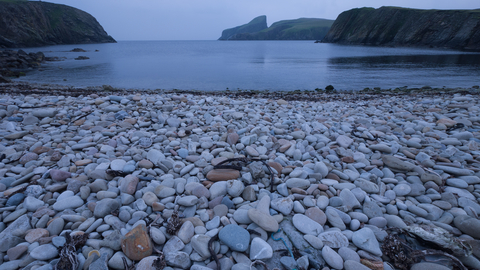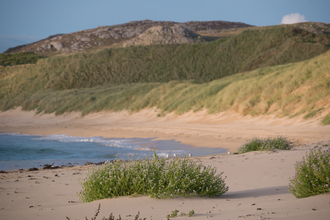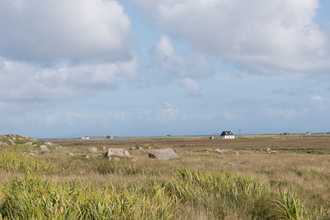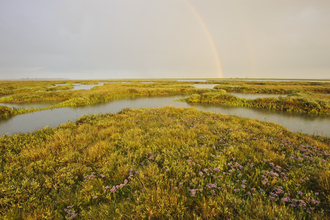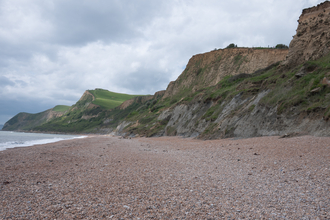Beaches and strandlines
What is it?
A beach is a strip of land next to a big body of water made of loose sand or stone. Between tides, the sand is hit twice a day by waves, keeping the sand mostly bare, home only to a small range of invertebrates such as sand hoppers, cockles and lugworms. Waves carry debris including seaweed and driftwood, which pile up and form the strandline - this is a shoreline higher than the water level. Here, just beyond the normal reach of the waves, a few plants including oraches, prickly saltwort, sea rocket and sea sandwort can form a row of vegetation.
Above this high tide line on shingle beaches, large, deep-rooted long-living plants form an attractive display, typically including yellow-horned poppy and sea kale, with mats of sea campion, sea pea and sea mayweed. Closer to the land, more settled vegetation including lichen-rich grassland and heathland and even scrub and woodland develops on more solid shingle. Sandy beaches play out a different story, where sand dunes can form several hundred metres back from the beach with a constant supply of wind-blown sand and enough space to fill.
Why is it like this?
Waves battering against hard shorelines gradually erode them. The resulting sediment moves along with tides and currents, eventually washing up again onto the shore and forming beaches, spits, barriers or rounded forelands. Shingle beaches are only found on exposed coasts with the right sediment and where the waves have enough energy to shift the shingle. The natural material that builds up at the strandline provides just enough nutrients and water for a few plants to survive.
Sand and shingle beaches are dynamic places, constantly moving and reshaping as tides and storms shift the material about. On wider beaches, material builds up in areas no longer reached by the sea, where there is not too much water so healthy vegetation can grow. On sandy beaches, settled debris and plants capture blown sand; the first step in the creation of sand dunes.
The tide also brings flotsam and jetsam. These are useless and discarded objects stuck in the sea including plastics - mostly packaging and tiny pellets called nurdles. It is estimated that 11 million tonnes of plastic ends up in the oceans each year which can cause harm to marine life and enter human food chains.
Distribution in the UK
About one third of the UK coastline is fringed with sand or shingle beaches, although much is too mobile to support vegetation. The UK’s vegetated shingle beaches in particular are of global significance.
What to look for
Look for breeding ringed plover, oystercatcher, terns and gulls. On shingle in the north look for the pretty blue and pink flowers and silvery green leaves of oysterplant, while sea-pea is particularly characteristic of East Anglian shingle. Along the south coast, you might be lucky enough to find scaly cricket under debris, also likely to be home to a range of other invertebrates including springtails, woodlice, beetles and spiders.
Common findings include mermaid’s purses -the egg capsules of sharks, skates and rays. You might also see whelk egg cases, cuttlebones and the moulted shells of crabs. Click here for more things to spot
Conservation
Sand and shingle beaches are often prevented from developing naturally due to over-stabilised by sea walls and groynes. They are also often halted by development such as sea defences, industrial development, housing, golf courses or forestry plantations. But the mobility of beaches needs to be maintained to let natural movement take place. It is vital that we strategically approach the need to allow room for beaches to move inland with sea-level rise.
Beaches are much loved and, at popular sites, sensitive management is needed to make sure that the fragile vegetation is not destroyed, prevented from developing, and that breeding birds are not disturbed by people and dogs. Cleaning is an important part of this, but machine-led beach-cleaning should be avoided as it removes the top layer of sand and the strandline, while compressing the beach, badly damaging important invertebrate populations.

